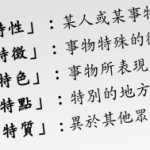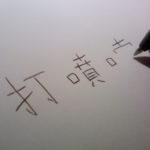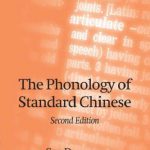Articles in the ‘Distinctively Chinese’ category Page 14
-
Phonetic components, part 1: The key to 80% of all Chinese characters
At least 80% of all Chinese characters are made up of one semantic component (meaning) and one phonetic component (pronunciation). The sheer number of characters formed this way means that these characters ought to be taught properly, yet I think this topic is largely glossed over. This is the first article of two dealing with phonetic components and how they can help you learn Chinese better.
Read → -
Dealing with near-synonyms in Chinese as an independent learner
Near-synonyms cause major headaches for language learners and it’s especially hard for Chinese learners due to the lack of adequate resources in English. This article suggests some ways of handling the problem of near-synonyms when learning Chinese.
Read → -
21 essential dictionaries and corpora for learning Chinese
There are many online resources for looking up Chinese characters and words, so many that it might be very hard for new learners to find what they need. This article introduces 21 dictionaries and corpora for Chinese learners, including what they should be used for in addition to some pros and cons.
Read → -
Horizontal vocabulary learning in Chinese
The normal thing to do when we learning characters or words is to focus on deepening our knowledge, researching components and understanding more about what we’re trying to learn. Some problems can’t be alleviated this way, however, instead they call for horizontal vocabulary learning, i.e. to putting the character or word into context and to compare it with similar characters or words. Only then can we grasp the bigger picture.
Read → -
How to create mnemonics for general or abstract character components
Anyone who has tried mnemonics for learning Chinese characters knows that some components are easier to link together than others. This article discusses in detail how to deal with abstract or general character components and how to handle components with the same or overlapping meaning, an essential skill if you’re serious about character learning.
Read → -
Sensible character learning: Progress, reminders and reflections
The sensible character challenge has now been running for two weeks and it’s time to see how things have been going so far. This post is a progress report that contains some reflections on the challenge itself, as well as some practical advice on how to solve common problems. It also invites participants to share their experience and progress so far.
Read → -
Towards a more sensible way of learning to write Chinese
This character learning challenge strives to teach students to learn Chinese characters in a way that makes sense in the long term. While the challenge is over, the principles are still applicable!
Read → -
You can’t learn Chinese characters by rote
My conclusion after years of learning characters is that rote learning is useless. Spaced repetition software is good, but it’s still not enough. If adult foreigners are going to learn to write Chinese by hand, we really need another method. We need mnemonics, we need active processing, we need to quit rote learning and stop using SRS mechanically.
Read → -
Kickstart your Chinese character learning with the 100 most common radicals
This is a list of the 100 most common radicals among the 2000 most common characters, meaning that it’s excellent for beginners who want to boost their understanding of Chinese characters. The list contains simplified, traditional, variants, meaning, pronunciation, examples, helpful comments and colloquial names.
Read → -
Review: The Phonology of Standard Chinese
Duanmu San’s “The Phonology of Standard Chinese” is by far the best introduction to Mandarin phonology that I’m aware of. It’s mostly useful for people who like phonology or are already at an advanced level and want to add a theoretical edge. This book contains tons of interesting material, all well-presented and well-argued.
Read →






